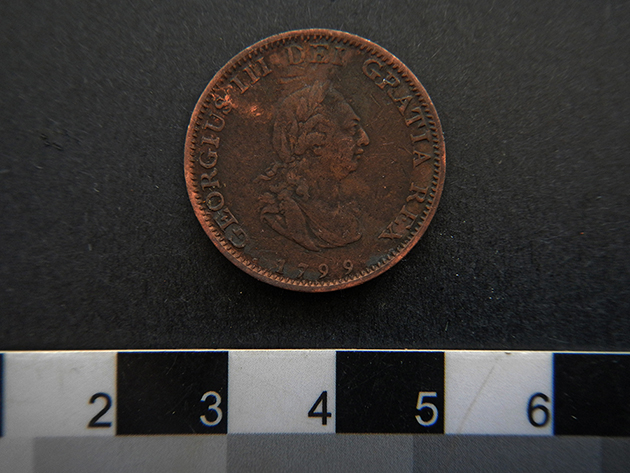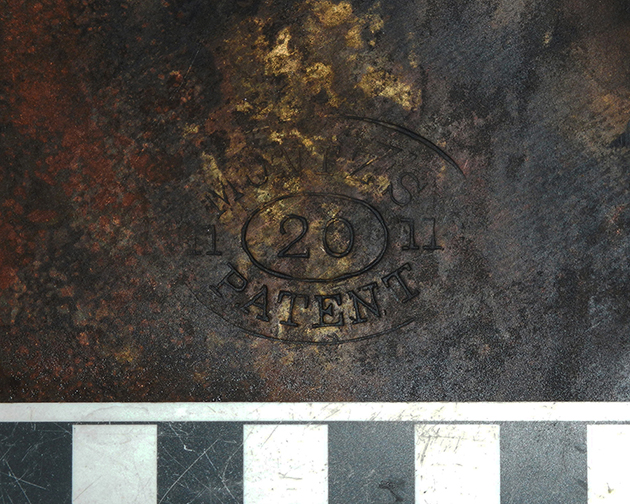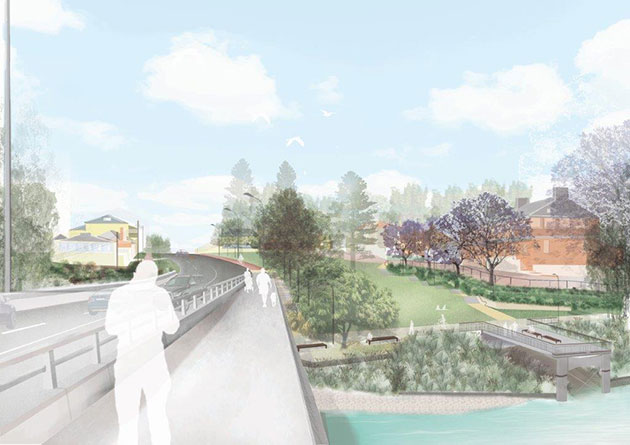Conservation and heritage - Windsor Bridge replacement
Project overview
Archaeologists are carrying out salvage archaeological investigations on site, in close consultation with stakeholders, to minimise any potential impact to Aboriginal and colonial artefacts.
Several items of colonial and Aboriginal significance have been found, including Aboriginal stone tools and other non-Aboriginal artefacts (including ceramics, bottles, bricks, etc.).
The most significant colonial discovery to date is the uncovering of a brick barrel drain, dating back to 1814.
Image
Image controls:
Conservation and heritage information
Maritime Archaeological Investigation Update
Maritime Archaeological investigations along the river began in early July. The archaeologists have found the upper layers of the riverbed are made up of loose and compacted cobbles amongst silt and sand. The sand layers have been found to contain 19th and 20th century artefacts including wharf fastenings.
While undertaking the underwater investigations, the archaeologists have found a conglomerate of cobbles and bricks with quartzite and sandstone fragments. They have also found a presence of oyster shells which do not appear to be local to the area, raising the suggestion that the conglomerate may be a rudimentary form of hydraulic cement laid down in the construction of the wharf(s) built 1810s.
The archaeological investigation will attempt to determine whether the conglomerate was naturally or deliberately formed. To date, the artefacts uncovered within the conglomerate are mostly early to mid-19th century. Below the conglomerate there are various layers of silt, sand and gravel which contain few but early artefacts such as coins in excellent condition dated to 1799. These layers may date to the early 19th and late 18th century however it is too early in the investigation to confirm this.
Archaeological investigation update
Extensive investigation work commenced in October 2017, as part the Windsor Bridge replacement project. Roads and Maritime Services is pleased to announce the brick barrel drain will stay in place in Thompson Square. During the excavation, crews recently located the end of the brick barrel drain near the river. Although most of the brick drain has been found intact, the end was found to be eroded and partially washed away. Roads and Maritime has developed a design to protect and preserve the brick drain in place. Further archaeological studies are under way to record the finds and preserve the historical significance of the site.
Archaeological salvage in the 21st century
Salvage work is currently being carried out on site to minimise any potential impact on Aboriginal archaeological artefacts.
The salvage work involves the excavation of the north-eastern area of Thompson Square using machinery. Once the top layers of the soil and debris are removed, the specialist archaeologists hand excavate through the sand body which contains the Aboriginal artefacts. The sand which is removed during this process is then wet screened by specialist Aboriginal staff to ensure nothing of historical significance is missed.
Any significant discoveries are then analysed by archaeologists and catalogued.
What has been discovered?
So far, the archaeologists have uncovered several items of colonial and Aboriginal significance, including Aboriginal stone tools and other artefacts.
The most significant colonial discovery to date is the uncovering of a brick barrel drain dating back to 1814.
According to the Hawkesbury Historical Society, the brick barrel drains were referred to as the ‘smugglers tunnels’ and were used to deliver casks of ‘illicitly brewed’ rum from the Hawkesbury River to Andrew Thompson’s store.
Early colonial heritage
Archaeological investigations have identified the location of the brick barrel drain down to the river. The barrel drain is filled with silt but most of the drain appears to be intact in all locations and has remained uncovered to date.
The end of the drain was found approximately 15 metres from the river. At this location the barrel drain was eroded and partially washed away. It had been reinstated by the connection of a smaller ceramic clay pipe, to direct the drain towards to river.
Several brick box drains have also been found during the excavations. The box drains were located at the original ground level and collected surface runoff across the slope and directed the flow to brick sumps. The sumps built over the barrel drains allowed the water to drop down into the barrel drain which then flowed to the river.
Keeping the barrel drain intact
The brick barrel drain is significant to the local community. The stories and folklore surrounding it form part of the rich local history the town of Windsor prides itself on.
Part of the barrel drain is located close to the southern bridge approach in Thompson Square. Roads and Maritime is adjusting the retaining wall design to ensure the barrel drain can remain where it is situated.
The Strategic Conservation Management Plan (SCMP) for the Windsor Bridge Replacement Project has received final approval from the Department of Planning and Environment (DPE).
The SCMP has been prepared to develop strategies, guidelines and actions for the conservation of the heritage significance of Thompson Square.
It was developed to meet the conditions of approval for the Windsor Bridge Replacement Project and was prepared in consultation with the DPE, the Office of Environment and Heritage and Hawkesbury City Council. Consultation on the SCMP was also held through a series of workshops with community representatives between May and July 2017. Details of the feedback received and its consideration is included in SCMP Volume 4 – Consultation report.
The final approved SCMP is now available for download from the project documents section of this website.
What happens with the artefacts we find?
We are working with the Aboriginal stakeholders who are participating in the salvage work on site, to determine their preferred option for what happens with the artefacts. There are a few different options for the items of significance that are uncovered such as traditional reburial, displaying them in a museum, or other culturally appropriate options. This will be decided by the Aboriginal Focus Group which represents eight Aboriginal groups with a cultural attachment and authority to the project area.
The colonial artefacts will be analysed, dated and catalogued by the archaeologists to ensure we are able to specify exactly what has been found and how old the items are.
Strategic Conservation Management Plan
The Strategic Conservation Management Plan (SCMP) for the Windsor Bridge Replacement Project has received final approval from the Department of Planning and Environment (DPE).
The SCMP has been prepared to develop strategies, guidelines and actions for the conservation of the heritage significance of Thompson Square.
It was developed to meet the conditions of approval for the Windsor Bridge Replacement Project and was prepared in consultation with the DPE, the Office of Environment and Heritage and Hawkesbury City Council. Consultation on the SCMP was also held through a series of workshops with community representatives between May and July 2017. Details of the feedback received and its consideration is included in SCMP Volume 4 – Consultation report.
The final approved SCMP is now available for download from the project documents section of this website.
Windsor Bridge Heritage Interpretation Plan
Please view or download the Windsor Bridge Interpretation Plan Consulation Report September 2019 which gives an overview of how the interpretation was developed.



